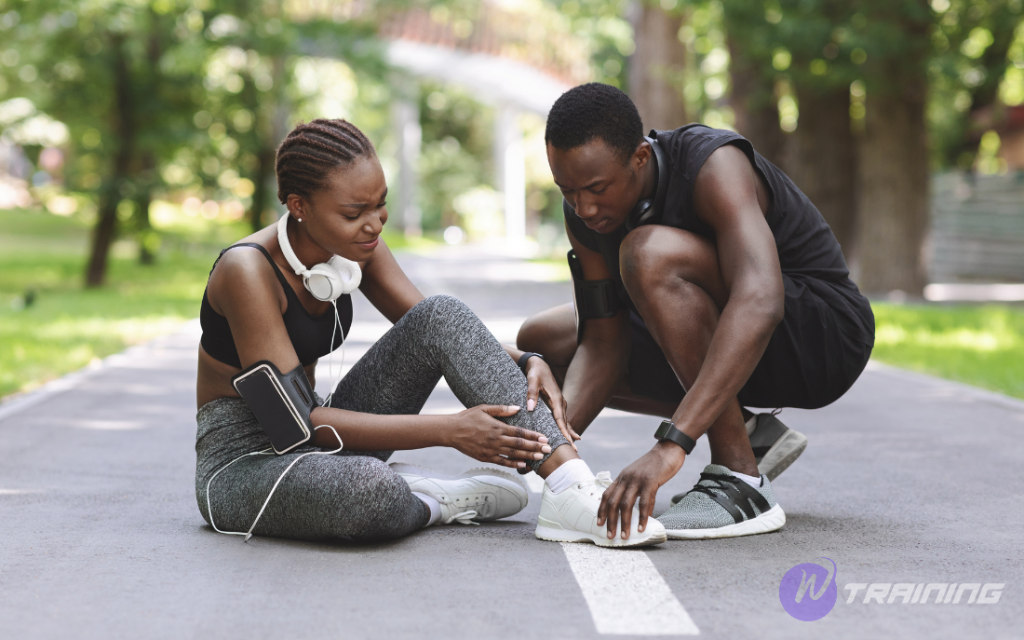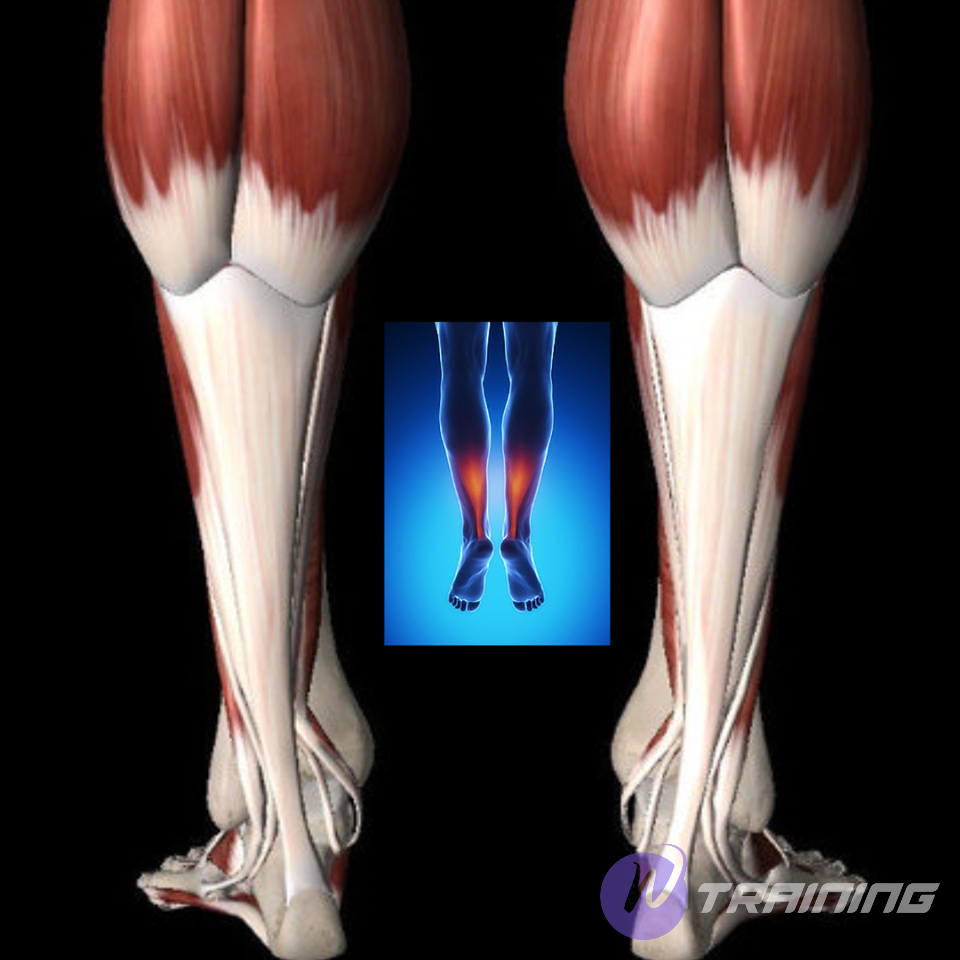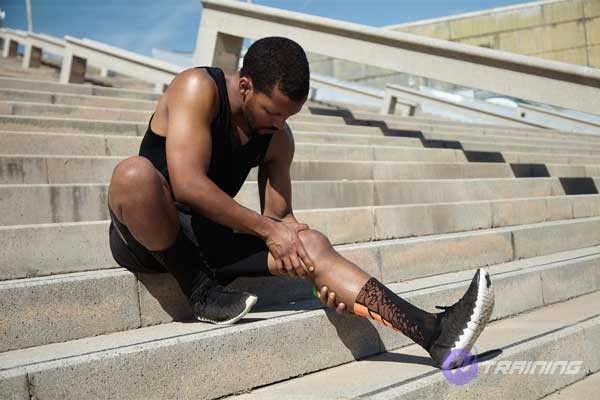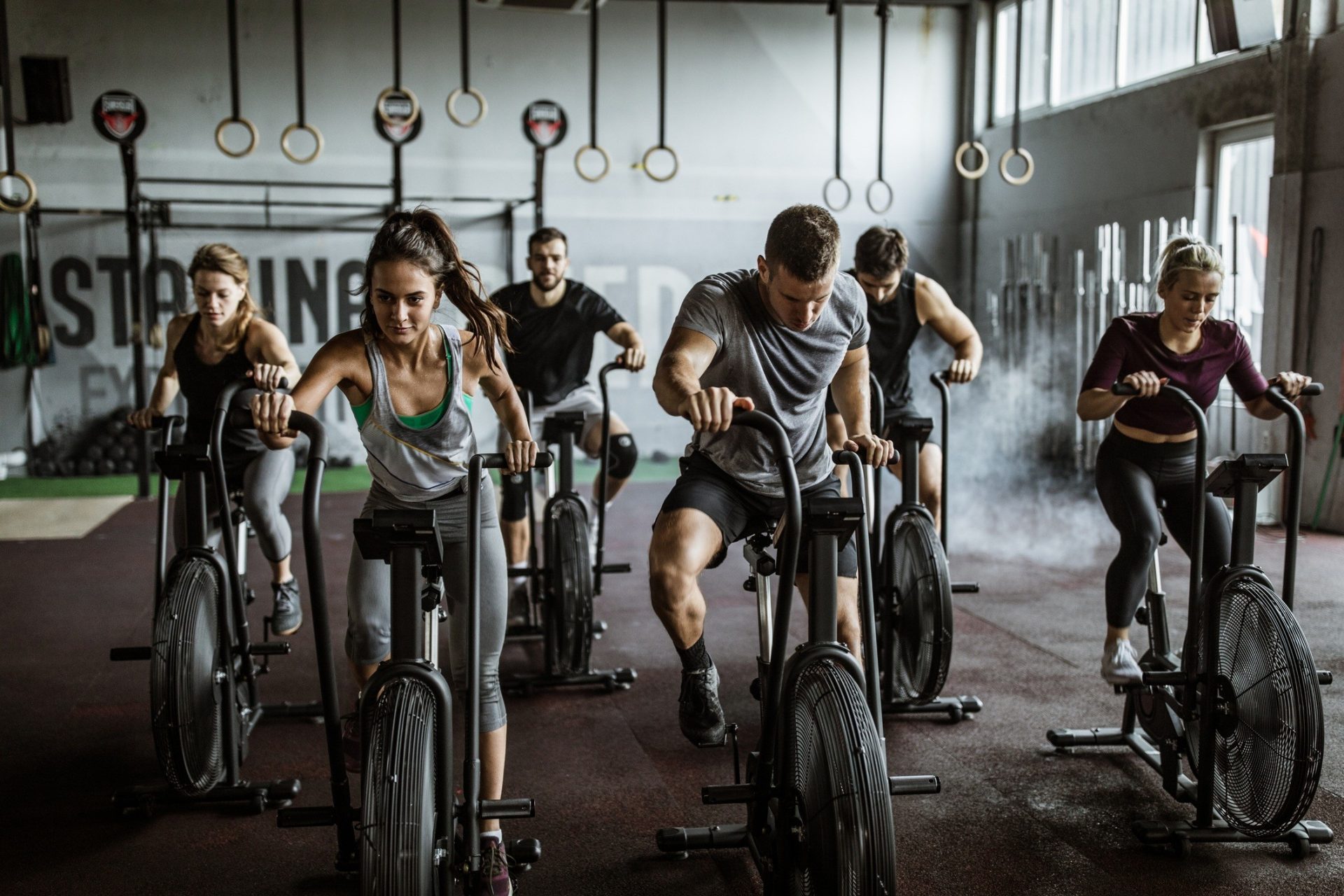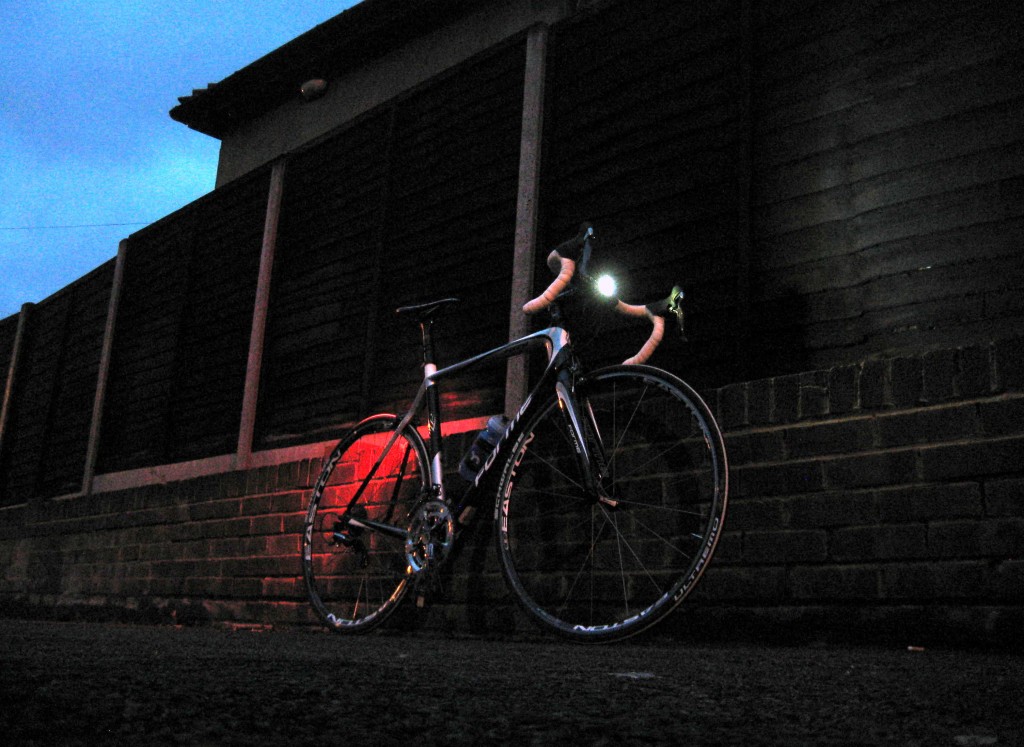Calf injury is common terminology runners use to describe the feeling of pain, soreness, and tightness deep within the muscles along the back of their lower leg. It not only causes pain and interferes with running but also causes long-term damage to calf muscles. Let’s find out the most popular running calf injuries maybe you do not know.
Calf Muscles
1. Definition
The calf muscle, on the back of the lower leg, is made up of two muscles:
- The gastrocnemius is the larger calf muscle, forming the bulge visible beneath the skin. The gastrocnemius has two parts or “heads,” which together create its diamond shape.
- The soleus is a smaller, flat muscle that lies underneath the gastrocnemius muscle.
The gastrocnemius and soleus muscles taper and merge at the base of the calf muscle. Tough connective tissue at the bottom of the calf muscle merges with the Achilles tendon. The Achilles tendon inserts into the heel bone (calcaneus).
During walking, running, or jumping, the calf muscle pulls the heel up to allow forward movement.
2. Calf muscle conđitions
- Calf muscle strain
- Pulled calf muscle
- Calf muscle tear
- Calf muscle rupture
- Myositis
- Rhabdomyolysis
- Calf muscle cancer
3. Calf muscle test
- Magnetic resonance imaging (MRI scan): An MRI scanner uses a high-powered magnet and a computer to create highly detailed images of the calf muscle and other leg structures.
- Computed tomography (CT scan): A CT scanner takes multiple X-rays, and a computer compiles the X-rays into images of the calf muscle and other structures in the leg.
- Calf muscle ultrasound: A device placed on the skin bounces high-frequency sound waves off the calf muscle, tendon, and other structures in the leg. The signals are converted into images on a video screen, allowing healthcare providers to see structures inside the body.
See also: 7 Most Common Running Injuries: Causes and Correctives
Running Calf Injuries
1. Common causes of calf injuries
Sudden onset (acute) calf pain
The following injuries are common causes of sudden onset or acute calf pain:
-
Calf strain
A torn calf muscle is probably the most common cause of sudden onset pain in the lower leg’s back.
-
- A calf strain is a tear in either the gastrocnemius muscle or the soleus muscle which together make up the calf muscle group.
- In the middle of the calf muscle area, sudden sharp pain is felt at the point where the gastrocnemius muscle connects to the Achilles tendon.
- The muscle will often be tender to touch at the point of injury.
- Swelling and bruising may appear depending on the type and severity of your injury.
A calf muscle strain is graded from 1 to 3, with grade 3 being the most severe.
-
Calf contusion
A contusion occurs following a direct impact or trauma to the calf muscles. For example, being kicked in the back of the leg in a game. Symptoms of a calf muscle contusion include:
-
- Sudden pain resulting from direct trauma to the muscle.
- Pain may be mild, or so severe you will be unable to walk properly.
- The area will be tender and swollen.
- Bruising may, or may not appear depending on the type, and how bad your injury is.
- Although contusions may not at first appear serious they must be treated as soon as possible with cold therapy PRICE principles (protection, rest, ice, compression, and elevation).
-
Cramp
A cramp is a powerful and painful involuntary contraction of the muscle. Symptoms consist of:
-
- A sudden, involuntary contraction of your muscle.
- It usually occurs towards the end of a particularly hard training session, or possibly a few hours later.
- Immediate treatment is to try and stretch the muscles gently to release the spasm, often the help of a partner is needed.
- Potential causes include dehydration and low carbohydrate levels so taking on fluids and energy may help.
Gradual onset (chronic) calf pain
The following are common causes of gradual onset of chronic calf pain:
-
Posterior compartment syndrome
Posterior compartment syndrome occurs when the muscle swells up too big for the sheath surrounding it. Compartment syndromes can be acute, which occur suddenly, or chronic, which have developed gradually over time.
Acute symptoms:
-
- Acute compartment syndrome occurs suddenly and may develop following a contusion (direct trauma to the muscle).
- The muscle bleeds within the muscle sheath causing increased pressure within the muscle sheath.
- An acute compartment syndrome needs urgent medical attention, especially if the pain becomes progressively worse as it can result in long-term damage.
Chronic symptoms:
-
- Chronic compartment syndrome occurs because your muscle gradually grows too big for the sheath surrounding it.
- Deep aching pain or tightness in the lower leg’s back occurs gradually during a run but then eases off with rest.
- Experienced runners may find the pain comes on at the same point in a run consistently.
-
Lateral compartment syndrome
-
- Lateral compartment syndrome can be acute or chronic the same as posterior compartment syndrome, only the pain is over the outside of the calf muscles.
- It is probably more common as a chronic injury in long-distance runners.
-
Tight calf muscles
Although not a specific injury, tight muscles at the back of the lower leg are a widely seen problem among athletes and can lead to other related injuries. Tight calf muscles may be caused by:
-
- Poor foot biomechanics
- Lack of stretching
- Wearing high-heeled shoes.
If your calf muscles are partially contracted, or in spasm, the blood and nutrients cannot flow so easily, which may cause discomfort and pain. If left untreated, this can increase the risk of suffering from a more severe and acute injury.
-
Deep vein thrombosis
Deep vein thrombosis (DVT) is a possible cause of calf pain which should always be considered. Although it is not as likely as the injuries above, it is a condition that should not be missed or overlooked.
-
- It is a blood clot in the veins and is most likely to happen in the calf area, especially after long flights and surgery.
- This is a serious condition and medical help is needed if this is suspected.
-
Fibula stress fracture
Fibula stress fracture may cause calf pain. The calf muscles attach to the fibula bone, so the muscles’ traction and twisting forces can cause a stress fracture. Symptoms consist of:
-
- Pain at the back of the lower leg, which may be more towards the outside.
- This injury would make putting weight on the leg pain, and the calf pain is likely to increase with exercise.
-
Other causes of calf pain:
-
- Calf pain may be referred to from other body parts and produce pain in the calf.
- It may originate from injuries to the spine, the knee (including Baker’s cyst and PCL injuries) and myofascial tissue structures (particularly in the gluteal muscles).
- Calf pain may also be caused by trapped arteries or vessels, such as the popliteal artery.
- Trapped tibial and sural nerves in the calf may also make the lower leg area painful.
2. Differing levels of severity
Muscular strains and tears are classified according to their severity in terms of how many fibers have been disrupted or ruptured
- Grade 1: Calf Strain
This is the least serious calf injury. A small number of muscle fibers have been damaged in the muscle. Signs and symptoms of this type of stress may not be noticed until inactivity. Tension, cramping, and mild soreness are common when muscles are stretched.
- Grade 2: Calf tear
This is sometimes referred to as a tear in a part of the calf. A large number of muscle fibers have torn, however, much of the muscle remains intact. Localized calf pain immediately develops with activity, especially walking and running. This area is often sore to the touch.
- Grade 3: Calf Rupture
All muscle fibers have torn, losing continuity in the whole muscle. This is a serious injury and has a very high likelihood of disability. Often a bruise will appear below the tear and there may be a bulge as the calf muscles contract on their own. Athletes will not be able to walk without pain.
3. Treatment of calf injuries
The P.R.I.C.E. principles
Calf pain should be treated using the P.R.I.C.E. principles (protection, rest, ice, compression & elevation).
- Protection – Immediately discontinue training or competition to prevent a calf injury from worsening.
- Rest – Try to reduce your daily active needs and stop playing any sport that aggravates the pain. Continuing to exercise with a calf injury and not allowing time to heal can lead to more serious injury.
- Ice – Apply ice or cold therapy to the calf to help relieve pain symptoms and any inflammation. Apply for 10 minutes every hour for the first 24 to 48 hours after injury, reduce to 3 or 4 times a day as symptoms improve. Do not apply ice directly to the skin as it can burn. Use a commercial cold pack or wrap the ice in a wet tea towel.
- Compression bandage – Wearing compression support or compression bandage on the calf can reduce swelling.
- Elevate – Keeping your lower leg higher than your heart’s level can help reduce swelling due to the effects of gravity.
Rehabilitation
As with any injury, the rehabilitation period is an ideal opportunity to target areas that we all miss in our weekly workout routine.
Especially after a leg injury, the first step in rehabilitation is correcting the limbs that may be left behind after the pain has gone away. These limbs become a habit both when running and walking and can cause problems in areas like the lower back.
Specific exercises for one leg are important for building the strength of the injured limb and eliminating the feeling of using the other leg to bear part of the uneven load. These exercises also help the body regain the balance that was lost on the injured side during the injury.
As the strength and balance of a leg have improved, low-level plyometric exercises can be reintroduced as a precursor to running. Jumping, jumping, and skipping are all useful to reintroduce muscles with the dynamic load needed to run.
After successful progress through multidirectional plyometric exercises, the running can be reintroduced in short bursts. One sure way to re-injure muscles is to train too early at this stage. Running is to be approached with a methodical approach that progresses from session to session. Watch running techniques – especially foot position on contact.
Start with straight-line tracks with steady acceleration and deceleration. Then, slowly introduce changes in direction and more positive changes in speed.
4. Prevention of calf injuries
The following exercises will help you build strength and stability to prevent calf pain after running.
-
Single-Leg Squat
Balancing on one leg, flex at the hip, knee and ankle performing a mini squat keeping the knee aligned with the first two toes, then return to the standing position. Repeat this maintaining alignment of the knee.
-
Calf Raise
Start standing with the heels hanging off a step, with your body weight supported on the balls of the feet. Slowly allow the heels to drop towards the ground, coming below the height of the toes, then rise using the calves so that the heels come higher than the toes.
-
Calf Stretches
With one foot far in front of the other, and hands pushing on the wall, keep the rear leg straight and flex the front knee. Pushing the rear heel into the ground, a strong calf stretch should be felt in the rear leg.
-
Wobble Cushion Balance
Balancing in a single leg stance on any unstable surface. Begin with a reasonably stable surface, and progress by increasing time or decreasing stability.
-
Jumps
Staying ‘light’ and landing on the forefoot, jumps are a great way of re-introducing the calf complex to more dynamic loading. Begin with a set of 10 jumps on the spot. Then progress to doing as many jumps between one spot and another for 20 seconds. Further progression entails adding multidirectional jumps in all planes of motion.
-
Hops
Following the same methodology as that used when progressing through the jumps program: perform these dynamic motions as hops – preventing the body from compensating through using the uninvolved leg.
To sum up, since the calf muscles are a very important part of the body, strengthening the calf muscles is also advisable to take care of. Wish your calf injuries will recovery as soon as possible!
Read more:
What Are Shin Splints? Cause, Symptoms and How To Prevent?
Sign And Symptoms Of Dehydration While Exercising
